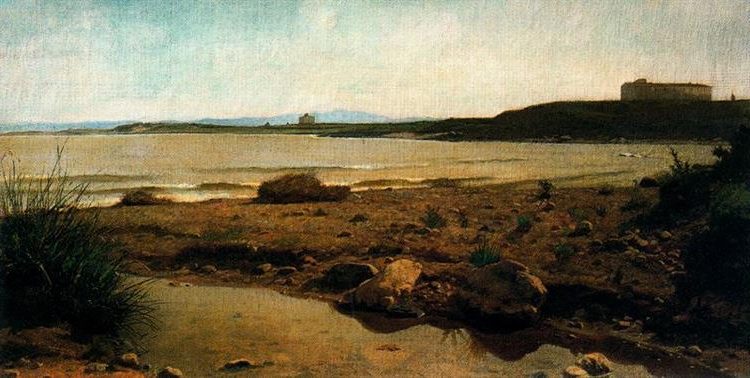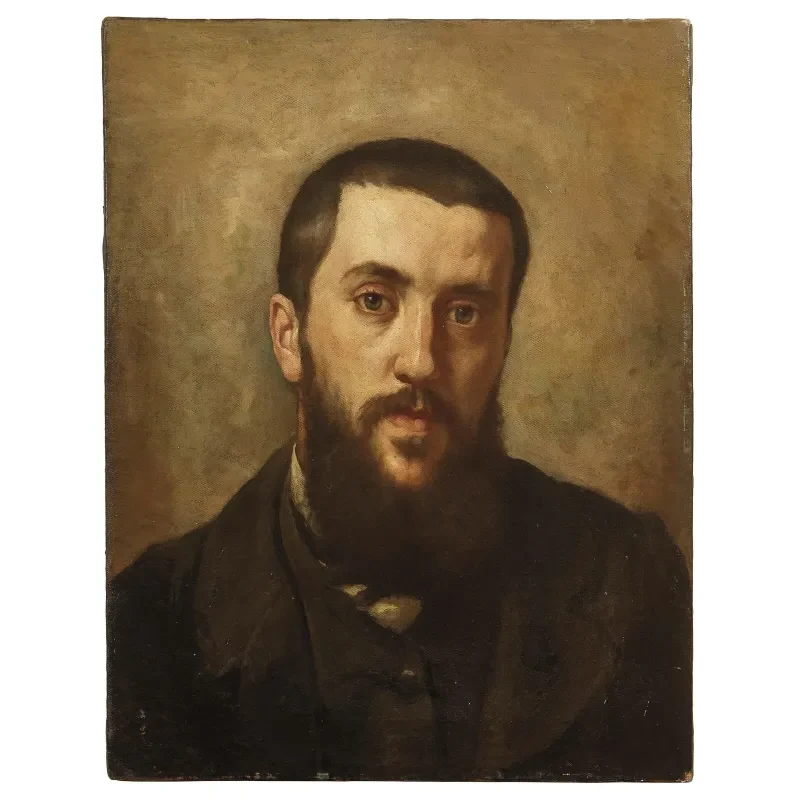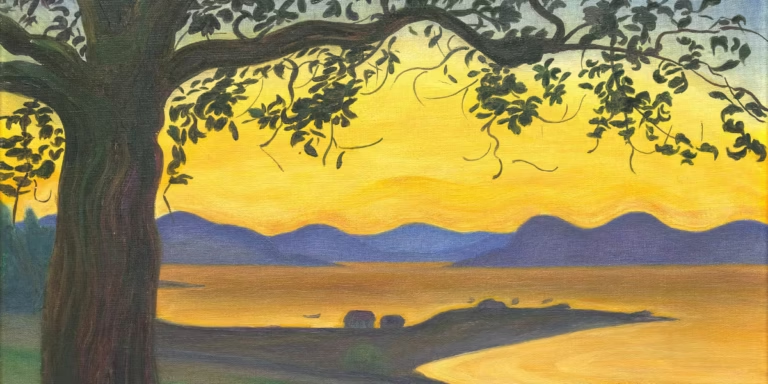Giuseppe Abbati Painter: Influential Figure of Italian Impressionist Movement
Born: 13 January 1836, Naples, Italy
Death: 21 February 1868, Florence, Italy
Art Movement: Impressionism
Nationality: Italian
Teacher: Vincenzo Abbati (His Father)
Giuseppe Abbati Painter: Influential Figure of Italian Macchiaioli Movement
Life and Career of Giuseppe Abbati
Giuseppe Abbati was an Italian painter born in 1836. He made significant contributions to art during his short life. He played a key role in the Macchiaioli movement and fought for Italian unification.
Early Life and Artistic Beginnings
Giuseppe Abbati was born on January 13, 1836 in Naples. His father, Vincenzo Abbati, was a painter who focused on architectural interiors. Giuseppe learned painting from his father at a young age.

Roofs by Giuseppe Abbati (often known as Tetti in Italian)
As a young artist, Abbati started by painting interiors like his father. He later moved to Florence, a major art center in Italy. This move exposed him to new artistic ideas and techniques.
In Florence, Abbati began to explore outdoor painting. He became interested in capturing natural light and scenes in the open air. This style would become a key feature of his later work.
Involvement in the Risorgimento
Abbati was not just an artist, but also a patriot. He joined the fight for Italian unification, known as the Risorgimento. In 1860, he fought alongside Giuseppe Garibaldi, a famous Italian general.
During a battle in Capua, Abbati lost his right eye. This injury did not stop his painting career. After recovering, he returned to his art with renewed passion.
Abbati’s experiences in the war influenced his art. He often painted scenes that showed his love for the new Italian nation.
Association with the Macchiaioli
In Florence, Abbati joined a group of artists called the Macchiaioli. These painters met at the Caffè Michelangiolo to discuss art and politics.
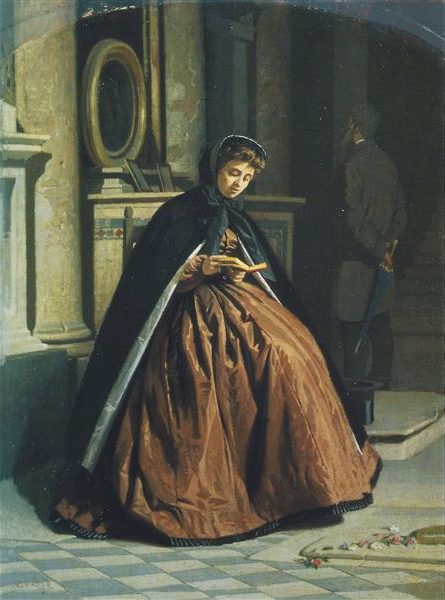
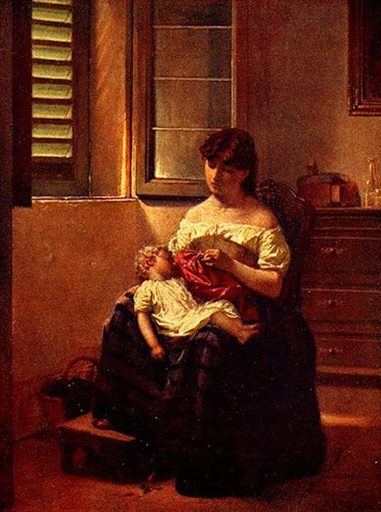
The Macchiaioli focused on capturing light and color in their paintings. They often worked outdoors to paint natural scenes. Abbati became an important member of this group.
His paintings from this time show bright colors and strong contrasts of light and shadow. He often painted landscapes and scenes of everyday life in Italy.
Tragic Ending and Legacy
Abbati’s promising career was cut short by a tragic accident. In 1868, he was bitten by his own dog. The bite infected him with rabies.
On February 21, 1868, Abbati died in Florence. He was only 32 years old. Despite his short life, Abbati left a lasting mark on Italian art.
His paintings can now be found in major museums across Italy. Art experts see Abbati as a key figure in the development of modern Italian painting. His work helped pave the way for later art movements in Europe.
Artistic Style and Themes
Giuseppe Abbati’s art was marked by bold brushstrokes and a focus on capturing light. He painted scenes of the Italian countryside and historical events with a unique style.
The Macchiaioli Movement
Abbati was a key figure in the Macchiaioli movement. This group of Italian painters broke from traditional styles in the mid-1800s. They used patches of color, called “macchie,” to create their works.
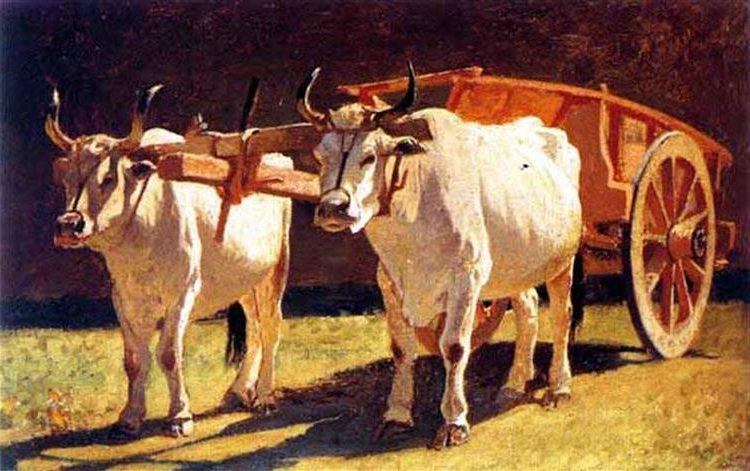
Bovi al carro (Oxen and Cart) by Giuseppe Abbati
Abbati and his peers painted outdoors to catch natural light. They aimed to show the essence of a scene rather than exact details. This approach was new and daring for the time.
The Macchiaioli paved the way for later art movements. Their style had similarities to Impressionism, which came after.
Pioneering Plein Air Landscapes
Abbati was one of the first to paint landscapes outdoors. This method is called “plein air” painting. He would set up his easel outside to capture the real effects of sunlight on the land.
His landscapes show the beauty of Italy’s countryside. Abbati used strong contrasts between light and dark areas in his paintings. This gave his work a sense of depth and mood.
He often painted scenes around Castiglioncello, a coastal town in Tuscany. These works show his skill in capturing the bright Mediterranean light.
Depictions of Italian Countryside and Historical Settings
Abbati’s art celebrated Italy’s natural beauty and rich history. He painted rural scenes that showed the daily life of farmers and villagers. These works give us a glimpse of 19th-century Italian country life.

House at the River (1863) by Giuseppe Abbati
He also created paintings of historical events. As a patriot who fought with Garibaldi, Abbati included scenes from Italy’s struggle for independence in his art. One famous work shows the Battle of Capua, where he lost his right eye.
Abbati’s paintings combine his love for Italy’s land and its quest for freedom. His art tells stories of both peaceful countryside and dramatic historical moments.
Major Works and Exhibitions
Giuseppe Abbati created many notable paintings during his short career. His works gained recognition in important exhibitions and influenced the Italian Impressionist movement.
Notable Paintings and Collections
Abbati’s “View from the Wine Cellar of Diego Martelli” is one of his most famous works. This painting shows his skill with light and shadow. It hangs in the Pitti Palace in Florence.

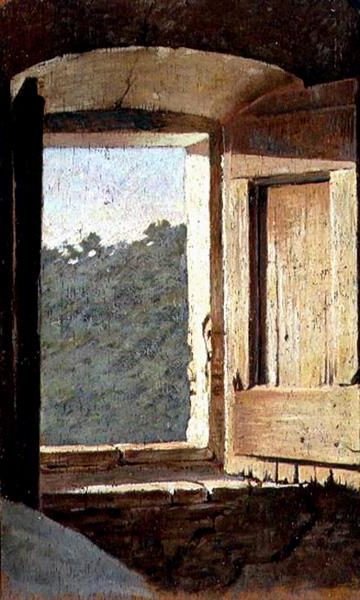
“View of Castiglioncello” is another key Abbati painting. It captures the beauty of the Tuscan coast. Many art experts see it as an early example of Italian Impressionism.
Abbati also painted portraits. His “Portrait of Giuseppe Abbati” gives viewers a look at the artist himself.
Influence on Italian Impressionism
Abbati was part of the Macchiaioli group. These painters helped start Italian Impressionism. They met at the Caffè Michelangiolo in Florence to share ideas.
Abbati’s use of light and color inspired other artists. His work affected painters like Giovanni Fattori and Silvestro Lega. They built on Abbati’s ideas in their own art.
Abbati’s paintings of the Tuscan countryside were very important. They showed a new way to capture nature on canvas.
Recognition and Critical Acclaim
Abbati’s work appeared in major shows during his lifetime. He took part in the National Exposition of 1861 in Florence. This event brought his art to a wider audience.
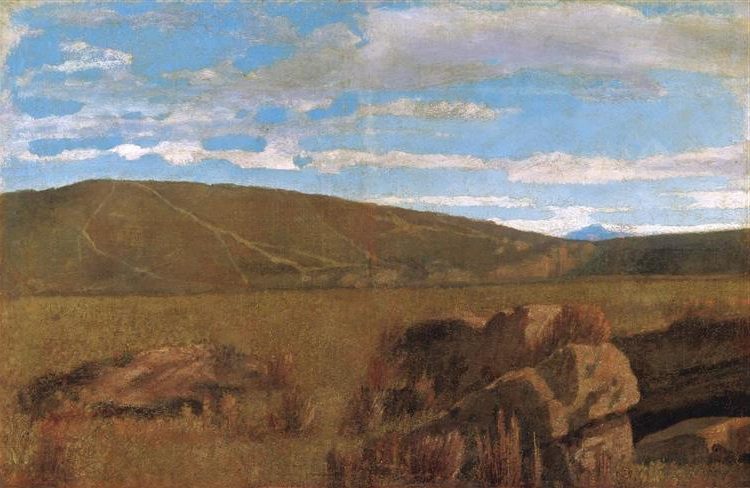
Vallata a Castiglioncello by Giuseppe Abbati
Art critics praised Abbati’s unique style. They liked how he painted everyday scenes in a new way. His work stood out from other artists of his time.
After his death, Abbati’s fame grew. Museums began to collect his paintings. Today, art historians see him as a key figure in 19th-century Italian art.
Frequently Asked Questions
Giuseppe Abbati was an important Italian painter in the 19th century. He helped shape a new style of art and left a lasting mark on Italian painting.
What style is Giuseppe Abbati known for in his paintings?
Abbati was known for his landscape and genre scenes. He painted everyday life and nature with a focus on light and color. His style moved away from traditional academic painting toward a more modern approach.
During which art movement did Giuseppe Abbati become prominent?
Abbati became prominent during the Macchiaioli movement in Italy. This movement started in the 1850s and was similar to Impressionism in France. The Macchiaioli painters focused on capturing light and atmospheric effects in their work.
What are some of Giuseppe Abbati’s most renowned works?
Some of Abbati’s best-known paintings include “The Tower of the Palazzo del Podestà” and “The Cloister”. He also painted many landscapes of the Tuscan countryside. His works often featured bold brushstrokes and a focus on natural light.
How did Giuseppe Abbati contribute to the Macchiaioli movement?
Abbati helped develop the Macchiaioli style of painting. He used quick brushstrokes and focused on light and shadow. His paintings captured fleeting moments and atmospheric effects. This approach influenced other artists in the movement.
Can Giuseppe Abbati’s influence on Italian painting be traced through specific techniques?
Abbati’s use of light and color influenced later Italian painters. He helped move Italian art away from academic styles. His focus on outdoor scenes and everyday subjects became more common in Italian painting. His bold brushwork and attention to natural light can be seen in the work of other artists who came after him.
What was Giuseppe Abbati’s impact on modern Italian art?
Abbati helped pave the way for modern Italian art. His break from traditional styles inspired other painters to experiment. His focus on light, color, and everyday scenes became important elements in Italian art. Abbati’s work helped bridge the gap between academic painting and more modern approaches in Italy.

